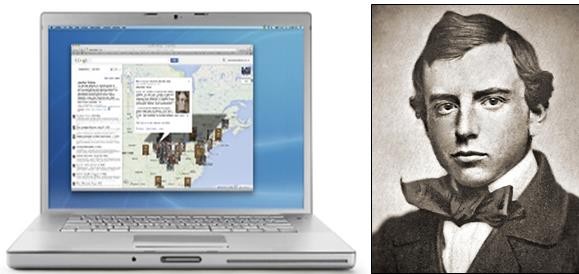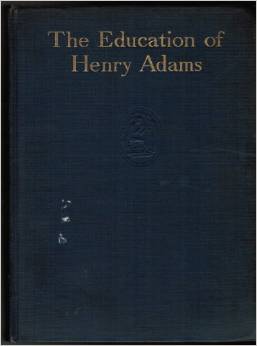Back in 1998, the Editorial Board of The Modern Library (a division of Random House) produced some memorable lists of the top 100 best novels and 100 best non-fiction works of the 20th-century (in English). Such lists are arbitrary and kind of meaningless, but they are compelling nonetheless. Anybody who aspires to be educated, or more precisely, to be self-educated, would naturally want to peruse these choices to see how many of the great books he or she had already read. Everybody in this seminar should (want to) do that, but don’t feel overwhelmed if the answer is merely a handful, or even if it’s none. There is a whole lifetime of reading ahead of everyone. The question is where to begin.
Fortunately, seminar participants don’t have to make that first big step all by themselves. As part of this digital humanities course, we will be reading the #1 non-fiction book on that Modern Library list —The Education of Henry Adams (1918). Reading and re-reading it over and over again, to be very precise. Because that turns out to be the key to good reading –i.e. mastering the art of re-reading.
There are actually different ways to read texts. How do you approach reading? Do you still prefer reading in print or do you rely mainly on your devices? What kind of reading tactic would you employ to tackle a big, daunting book like The Education? Think carefully about your process and be prepared to answer these kinds of questions in class. Also, try conducting your first “read” of Henry Adams’s book. That’s right. The whole thing. How should you “read” it with only a couple of days at hand?
This is an important skill to develop –and not just because you have to read a lot in college. Reading is one of the central acts of a humanist. It’s at the heart of digital humanities, too, even though the reading experience changes notably when it moves online or by computer. That last point raises some important questions of definitions. What are the humanities disciplines? We’ll take a look at the college distribution requirements to help sort that one out. But what about digital humanities? There’s many ways to handle that term. We’ll start by taking a look at a definition borrowed from the Digital Humanities Advisory Committee at Dickinson.
Finally, since we began with a list, let’s end there as well. It turns out that list-making is an extremely popular (or you might say, “viral”) concept in this digital age. That’s what BuzzFeed is all about. Do you know BuzzFeed? Can you explain its appeal or the popularity of sites such as Pinterest that offer people a kind of digital bulletin board of cool stuff and witty lists. Is there anything special about the way digital tools organize these age-old devices? As you ponder that question, check out this recent piece from the New York Times on BuzzFeed’s surprisingly grand ambitions, and if time allows, we’ll try to speculate on where the future might lie for such ventures.

